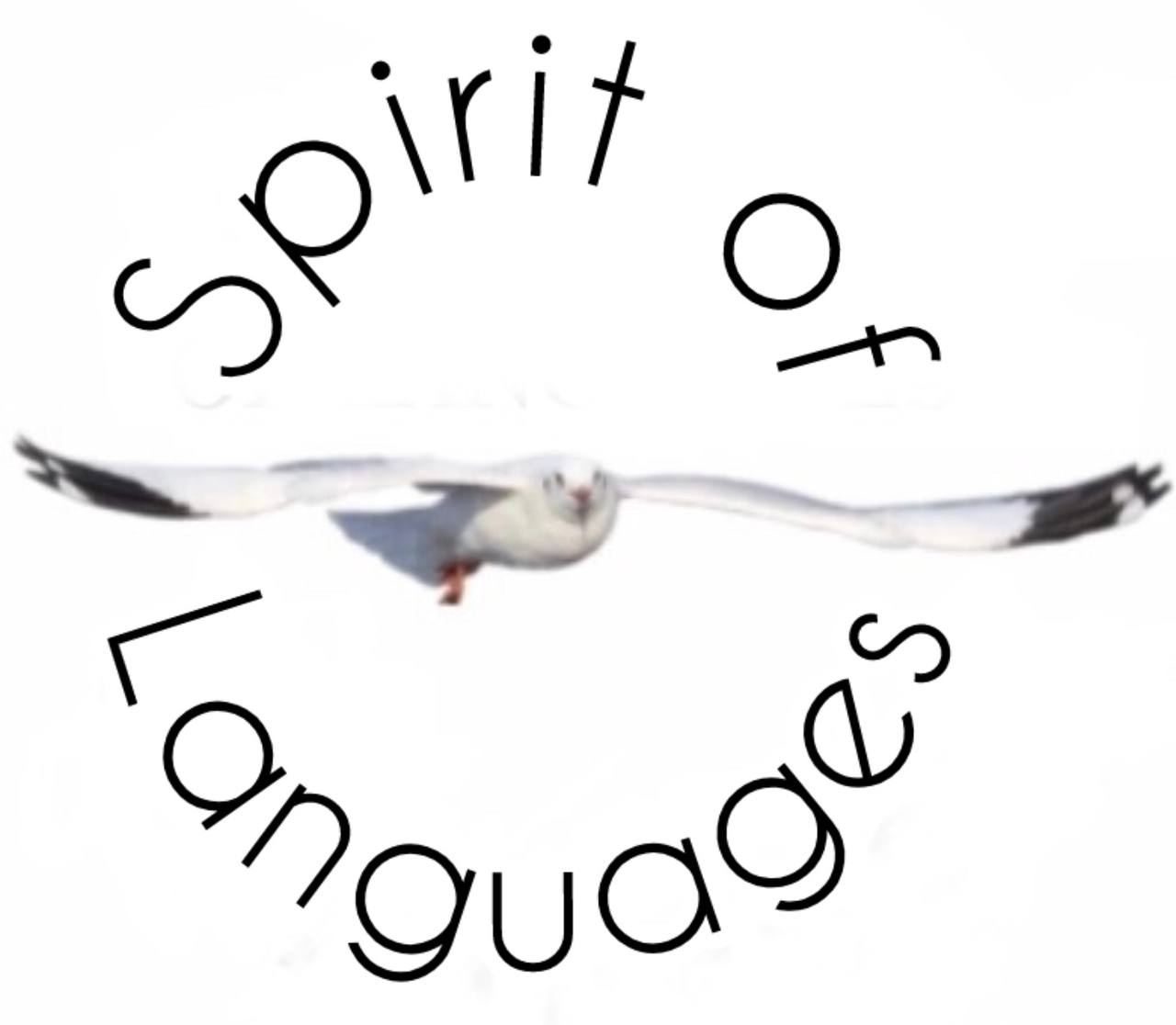Блог центра творческого изучения английского Spirit of Languages
Блог центра творческого изучения английского Spirit of Languages
Summer solstice
День летнего равноденствия
Подпишитесь на рассылку блога SoL и получайте новые статьи первыми
Нажимая на кнопку, вы даете согласие на обработку персональных данных и соглашаетесь c политикой конфиденциальности
The Summer Solstice has been celebrated for thousands of years across various cultures, often with festivals, rituals, and symbolic traditions tied to fertility, light, and the power of the sun.
Lets find out how it is celebrated around the UK
Lets find out how it is celebrated around the UK
Автор статьи

Summer Solstice celebrations at Stonehenge (England)
Stonehenge, the iconic prehistoric monument in Wiltshire, is one of the world’s most famous sites for Summer Solstice celebrations. Its alignment with the rising sun on the solstice suggests it was built as a Neolithic solar calendar (around 2500 BCE).
Astronomical Significance
- The Heel Stone aligns perfectly with the sunrise on the Summer Solstice, casting sunlight directly into the center of the stone circle.
- This phenomenon draws thousands who gather to witness the first rays of the longest day.
Modern Solstice Gatherings
Who Attends?
- druids & pagans. Many modern druid groups (like the Order of Bards, Ovates & Druids) hold rituals.
- New Age spiritualists. People come for meditation, chanting, and energy ceremonies.
- tourists & revelers. A mix of locals and international visitors join for the festive atmosphere.
What happens?
- sunrise observance. Crowds gather before dawn (around 4:45 AM) to watch the sun rise over the Heel Stone.
- drumming & music. Spontaneous drum circles, singing, and dancing break out.
- ceremonial blessings. Druids in white robes conduct rituals, sometimes with horns, staffs, and offerings.
Unique traditions & customs
- touching the stones. Normally forbidden, on solstice, visitors can walk among and touch the megaliths.
- flower crowns & face paint. Many attendees wear nature-inspired decorations.
- silent sunrise moment. A hush often falls as the sun appears, followed by cheers.
Why Stonehenge?
- ancient mystery: no one knows for sure why Stonehenge was built, but its solstice alignment suggests a deep connection to sun worship.
- living tradition: despite its Neolithic origins, the solstice celebration remains a vibrant, evolving event blending ancient and modern spirituality.
Astronomical Significance
- The Heel Stone aligns perfectly with the sunrise on the Summer Solstice, casting sunlight directly into the center of the stone circle.
- This phenomenon draws thousands who gather to witness the first rays of the longest day.
Modern Solstice Gatherings
Who Attends?
- druids & pagans. Many modern druid groups (like the Order of Bards, Ovates & Druids) hold rituals.
- New Age spiritualists. People come for meditation, chanting, and energy ceremonies.
- tourists & revelers. A mix of locals and international visitors join for the festive atmosphere.
What happens?
- sunrise observance. Crowds gather before dawn (around 4:45 AM) to watch the sun rise over the Heel Stone.
- drumming & music. Spontaneous drum circles, singing, and dancing break out.
- ceremonial blessings. Druids in white robes conduct rituals, sometimes with horns, staffs, and offerings.
Unique traditions & customs
- touching the stones. Normally forbidden, on solstice, visitors can walk among and touch the megaliths.
- flower crowns & face paint. Many attendees wear nature-inspired decorations.
- silent sunrise moment. A hush often falls as the sun appears, followed by cheers.
Why Stonehenge?
- ancient mystery: no one knows for sure why Stonehenge was built, but its solstice alignment suggests a deep connection to sun worship.
- living tradition: despite its Neolithic origins, the solstice celebration remains a vibrant, evolving event blending ancient and modern spirituality.

Avebury (Wiltshire)
There is the world’s largest stone circle (even bigger than Stonehenge) with a more relaxed, free-spirited vibe likely marked solar and lunar cycles. Some stones align with solstice sunrises.
Locals once believed the stones were petrified pagan dancers or even the Devil himself.
What happens?
- sunrise & sunset gatherings. Druids and pagans hold ceremonies among the standing stones.
- drumming & fire rituals. Less crowded than Stonehenge, with a stronger focus on spirituality.
- village festivities. The nearby Red Lion Pub often hosts live music and storytelling.
Avebury’s "Silent Sunrise" Ritual
- lost custom: neolithic farmers may have scattered burnt grain offerings at the "Swallowhead Spring" (a sacred source near the stones) to bless summer crops.
- revival idea: bring local wheat or barley to leave at the spring at dawn (biodegradable only!).
Locals once believed the stones were petrified pagan dancers or even the Devil himself.
What happens?
- sunrise & sunset gatherings. Druids and pagans hold ceremonies among the standing stones.
- drumming & fire rituals. Less crowded than Stonehenge, with a stronger focus on spirituality.
- village festivities. The nearby Red Lion Pub often hosts live music and storytelling.
Avebury’s "Silent Sunrise" Ritual
- lost custom: neolithic farmers may have scattered burnt grain offerings at the "Swallowhead Spring" (a sacred source near the stones) to bless summer crops.
- revival idea: bring local wheat or barley to leave at the spring at dawn (biodegradable only!).

Glastonbury Tor (Somerset)
It is a sacred hill linked to Arthurian legend and Celtic mythology, believed to be a spiritual energy vortex.
What happens?
- sunrise pilgrimage: hundreds climb the Tor at dawn for meditation and chanting.
- druid & goddess ceremonies: some perform rituals honoring the Sacred Feminine and sun deities.
- Glastonbury Festival connection though the music festival is usually weeks earlier, the solstice still draws mystics and musicians.
What happens?
- sunrise pilgrimage: hundreds climb the Tor at dawn for meditation and chanting.
- druid & goddess ceremonies: some perform rituals honoring the Sacred Feminine and sun deities.
- Glastonbury Festival connection though the music festival is usually weeks earlier, the solstice still draws mystics and musicians.

Cornwall’s Bonfire Nights (Cornwall)
It is a mix of Celtic and Viking traditions with massive coastal bonfires.
What happens?
Golowan festival (Penzance) is a midsummer festival with parades, fire performances, and the "Mock Mayor Election."
At St. John’s Eve (June 23) there are bonfires on beaches, inspired by old Celtic sun-worship rites.
Cornwall’s Midsummer Fires
Celtic "Tansys" (Fire Rituals). Bonfires on cliffs (e.g., Carn Brea) were lit to honor the sun and ward off evil spirits. Cattle were driven between flames for purification.
Sea offerings: fishermen floated flower garlands to appease sea spirits for safe voyages.
Mock battles & "Bonfire Giants". In Penzance, effigies of "winter giants" were burned to symbolize the sun’s triumph.
Cornwall’s "Fire Jumping”
Lost custom: after bonfires burned low, young couples would leap over embers hand-in-hand—those who didn’t let go were said to marry within a year.
Revival idea: host a small beach fire (safely!) and try this with friends (minus the pressure to wed!).
What happens?
Golowan festival (Penzance) is a midsummer festival with parades, fire performances, and the "Mock Mayor Election."
At St. John’s Eve (June 23) there are bonfires on beaches, inspired by old Celtic sun-worship rites.
Cornwall’s Midsummer Fires
Celtic "Tansys" (Fire Rituals). Bonfires on cliffs (e.g., Carn Brea) were lit to honor the sun and ward off evil spirits. Cattle were driven between flames for purification.
Sea offerings: fishermen floated flower garlands to appease sea spirits for safe voyages.
Mock battles & "Bonfire Giants". In Penzance, effigies of "winter giants" were burned to symbolize the sun’s triumph.
Cornwall’s "Fire Jumping”
Lost custom: after bonfires burned low, young couples would leap over embers hand-in-hand—those who didn’t let go were said to marry within a year.
Revival idea: host a small beach fire (safely!) and try this with friends (minus the pressure to wed!).

Rollright Stones (Oxfordshire)
It’s lesser-known but atmospheric stone circle with deep folklore ties (said to be a king and his knights turned to stone).
What Happens?
There are small, intimate gatherings. They are perfect for those seeking a quieter solstice experience.
Druid & wiccan rituals are often includes poetry, drumming, and blessings.
Rollright Stones (Oxfordshire)
Fairy legends & curses. Local tales warned that disturbing the stones at solstice would wake the petrified king and his army
Divination rituals: young women circled the "Whispering Knights" at midnight to hear their future husbands’ names.
Druid Revival (1700s). Like Avebury, the stones became a pilgrimage site for neo-druids claiming ancient (but likely invented) solstice rites.
Rollright’s "Stone Whispering"
Lost custom: placing your ear against the "King Stone" at solstice was believed to reveal secrets (possibly due to wind channels in the rock).
Revival idea: try it at dusk—some modern visitors report eerie echoes or vibrations.
What Happens?
There are small, intimate gatherings. They are perfect for those seeking a quieter solstice experience.
Druid & wiccan rituals are often includes poetry, drumming, and blessings.
Rollright Stones (Oxfordshire)
Fairy legends & curses. Local tales warned that disturbing the stones at solstice would wake the petrified king and his army
Divination rituals: young women circled the "Whispering Knights" at midnight to hear their future husbands’ names.
Druid Revival (1700s). Like Avebury, the stones became a pilgrimage site for neo-druids claiming ancient (but likely invented) solstice rites.
Rollright’s "Stone Whispering"
Lost custom: placing your ear against the "King Stone" at solstice was believed to reveal secrets (possibly due to wind channels in the rock).
Revival idea: try it at dusk—some modern visitors report eerie echoes or vibrations.

Whitby’s Pagan Festival (North Yorkshire)
It’s a historic seaside town with strong pagan roots (linked to Dracula lore and Celtic traditions).
What Happens?
Alternative music & workshops, talks on Norse mythology, tarot, and herbalism.
Beach rituals. There are some groups cast spells or leave offerings to the sea at sunrise.
Whitby’s Pagan & Viking Legacy
Norse "Litha" Celebrations
Vikings, who raided Whitby, likely held midsummer feasts for Baldur, the solar god.
Herb magic: St. John’s Wort (called "chase-devil") was gathered at solstice dawn for protection.
Dracula Connection
Bram Stoker set Dracula’s arrival on June 20 - perhaps nodding to Whitby’s old midsummer superstitions.
What Happens?
Alternative music & workshops, talks on Norse mythology, tarot, and herbalism.
Beach rituals. There are some groups cast spells or leave offerings to the sea at sunrise.
Whitby’s Pagan & Viking Legacy
Norse "Litha" Celebrations
Vikings, who raided Whitby, likely held midsummer feasts for Baldur, the solar god.
Herb magic: St. John’s Wort (called "chase-devil") was gathered at solstice dawn for protection.
Dracula Connection
Bram Stoker set Dracula’s arrival on June 20 - perhaps nodding to Whitby’s old midsummer superstitions.

London’s Urban Solstice Celebrations
It’s for those who can’t travel to ancient sites, the city offers its own twists.
What happens?
Primrose Hill Gatherings is a popular sunrise spot with drummers and yoga sessions.
Burning of the Clocks (Brighton, nearby) is quirky June 21 parade where people carry lanterns and then burn them on the beach.
London’s Lost Solstice Traditions
Tudor Maypoles & Morris Dances
Before Puritan bans, Londoners danced around maypoles (a midsummer fertility symbol) in Fleet Street and St. Giles
Thames "Boat Lights". Medieval barges floated lanterns downstream, echoing pre-Christian water rituals.
What happens?
Primrose Hill Gatherings is a popular sunrise spot with drummers and yoga sessions.
Burning of the Clocks (Brighton, nearby) is quirky June 21 parade where people carry lanterns and then burn them on the beach.
London’s Lost Solstice Traditions
Tudor Maypoles & Morris Dances
Before Puritan bans, Londoners danced around maypoles (a midsummer fertility symbol) in Fleet Street and St. Giles
Thames "Boat Lights". Medieval barges floated lanterns downstream, echoing pre-Christian water rituals.
Похожие статьи
Изучение иностранного языка через курсы| блог центра иностранных языков Spirit of Languages
Представляем небанальный способ изучения иностранного языка - через изучение интересной темы на курсах на иностранном языке. В статье мы собрали сайты, где можно найти такие курсы.
Теория множественного интеллекта | блог центра иностранных языков Spirit of Languages
В этой статье расширяем понятия "ум" и "интеллект"
Подростковый слэнг| блог центра иностранных языков Spirit of Languages
В этой статье мы изучаем подростковый слэнг, образованный от английских слов. К каждому слову есть мем, приятное времяпрепровождение обеспечено!
Соцсети различных стран| блог центра иностранных языков Spirit of Languages
Вы когда-нибудь интересовались местными соцсетями в различных странах? В этой статье на английском даем полный список, спешите прочитать!
Из зоны комфорта в зону роста| блог центра иностранных языков Spirit of Languages
В этой статье на английском вы узнаете как выйти из зоны комфорта в зону роста. Также, мы добавили словарик незнакомых слов. Приятного изучения!
О праздновании летнего равноденствия | блог центра иностранных языков Spirit of Languages
В этой статье на английском вы узнаете о праздновании дня летнего равноденствия в различных странах и культурах. Приятного изучения!
О различных суевериях| блог центра иностранных языков Spirit of Languages
В этой статье на английском мы описываем различные суеверия. Также, здесь есть словарик незнакомых слов. Приятного изучения!
